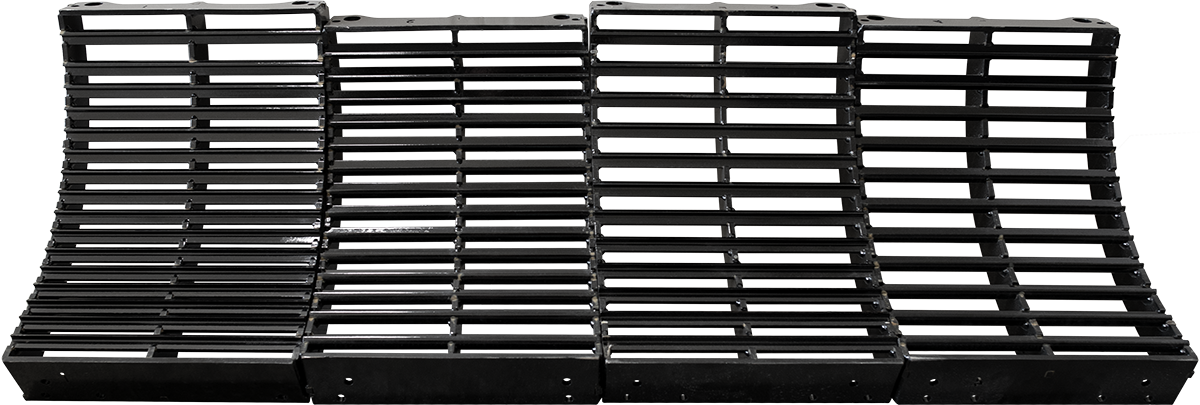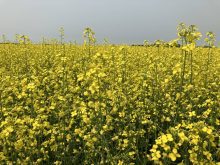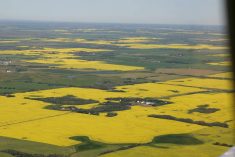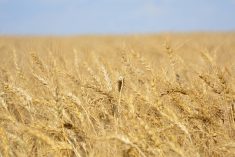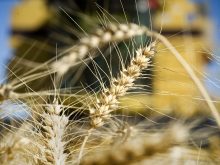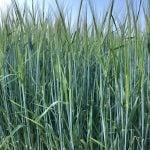Fewer fed animals
Fed cattle prices were mostly steady with averages slightly more than $80 per hundredweight last week, said Canfax.
The offering was considerably smaller with about 20,000 head trading through Canfax members, down 26 percent from the week before.
After a slow start because of the uncertainty caused by the new BSE case in the United States, most of the trade occurred June 15.
Many feedlots in southern Alberta report that cattle are losing weight because of the wet, muddy conditions. This could delay their marketing.
Read Also

Strong canola exports expected to tighten supply
Canola exports will end up the third strongest in the past 10 years, according to recent Canadian Grain Commission weekly export data.
Fed cattle prices in the U.S. fell again last week on worries over BSE and weaker beef demand. That narrowed the Alberta-U.S. basis to the range of $22-$24 per cwt. under, said Canfax.
Alberta steer prices June 16 in limited trade were $78.75 per cwt. live and $132.15-$133.20 flat, while a handful of heifers brought $78.75 live.
Canfax expected supply and demand would be about the same this week, but an unknown is the labour situation at Lakeside Packers in Brooks, Alta., where a strike vote is expected.
The U.S. market was expected to weaken further.
Beef prices weaker
Canadian beef cutouts have been losing ground and could fall more based on cut-out trends in the U.S. as beef prices there fall from near record levels.
Business is reported as slow on most beef products. Retail interest in pork and poultry has increased, Canfax said.
U.S. cutouts last week were $5 per cwt. lower on Choice and $2.70 lower on Select.
Calgary wholesale levels for delivery this week are steady at $134-$136 per cwt. with byproduct values also steady.
Feeder volume, price up
Volumes through Alberta auction markets started slow, but increased with the final tally up 25 percent from the week before, Canfax said.
At slightly more than 20,000 head trading, this was more than double the volume last year.
Price averages rose on most weight groups. With renewed interest in light cattle for grass, steers 400-700 lb. traded $2.50-$3.75 per cwt. higher, while heifers 400-700 lb. were 50 cents-$1 higher. Heavier feeder cattle also held their own with steers 700-900 lb. and heavier steady to $1.50 higher.
Heifers 700-900 lb. and heavier were steady to $2.25 higher. D1, 2 cows held steady averaging $24 with tops to $34 on spec cows. Butcher bulls were steady to 50 cents lower.
Volumes normally drop in July and August. Good moisture in most areas of the Prairies should help to support prices of lighter cattle in the short term, while heavier feeders continue to find support from the set-aside program, Canfax said.
Stock bred cows and heifers in northern Alberta were $300-$700. Cow-calf pairs brought $300-$650 on medium quality and $650-$1,450 on excellent quality.
Hog prices edge higher
U.S. cash hog prices edged slightly higher last week as packers sought supply despite margins that again slumped into the red.
Iowa, southern Minnesota cash prices finished the week at $51 per cwt. delivered to plant, up from $49.50 the week before.
The U.S. Department of Agriculture pork carcass cutout finished the week at $68.34 US per cwt., almost steady with the week before.
Traders expected some plants this week to slow production to pressure hog prices lower and pork prices higher so as to improve margins.
Reuters reported that traders forecast that this week’s USDA pig report would show the breeding herd would be steady to two percent larger than the same time last year.
U.S. pork exports for January-April were up almost 24 percent from 12 months earlier.
Live hog imports from Canada for the first four months of 2005 were down 14.5 percent from a year earlier. Feeder pig imports were down 12.6 percent and slaughter hog imports were down 18.3 percent.
Lambs weaker
Ontario Stockyards reported 2,045 sheep and lambs and 381 goats traded. All classes of lambs sold $10-$15 per cwt. lower, while sheep and goats traded barely steady.

